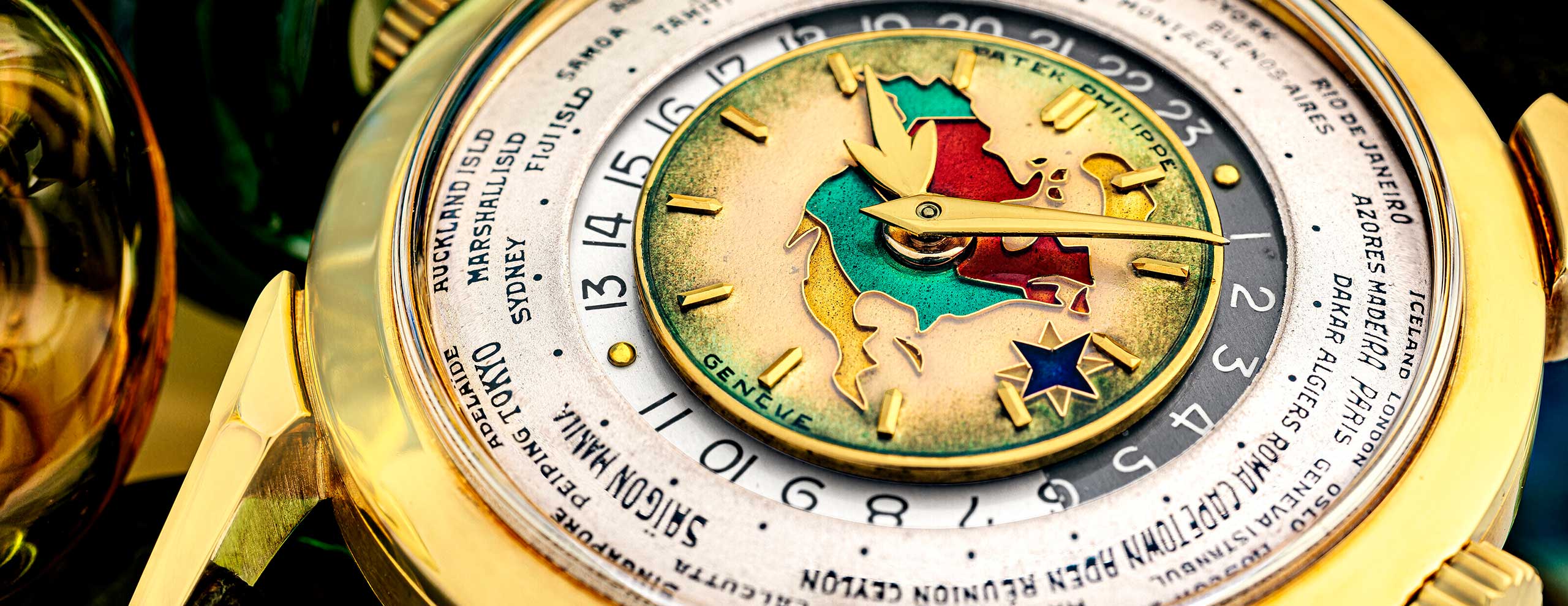The importance of this exceptionally rarewatch is undeniable. We take a closer look at its history to understand why.
As one of the most prominent producers of complex and innovative watches,
Patek Philippe has created numerous examples of haute horlogerie. The perpetual-calendar chronograph is perhaps the most famous of these ultimate timepieces, with the ref. 1518, which was the first wristwatch to combine these two complications, and its successor, the ref. 2499, among the most revered watches in the world.
Have you ever wondered if there’s a vintage Patek Philippe reference that combines both haute horlogerie and métiers d’art, with a production run that’s just a tiny fraction of the watches mentioned above? Enter the breathtakingly beautiful and objectively rare Patek Philippe World Time ref. 2523.
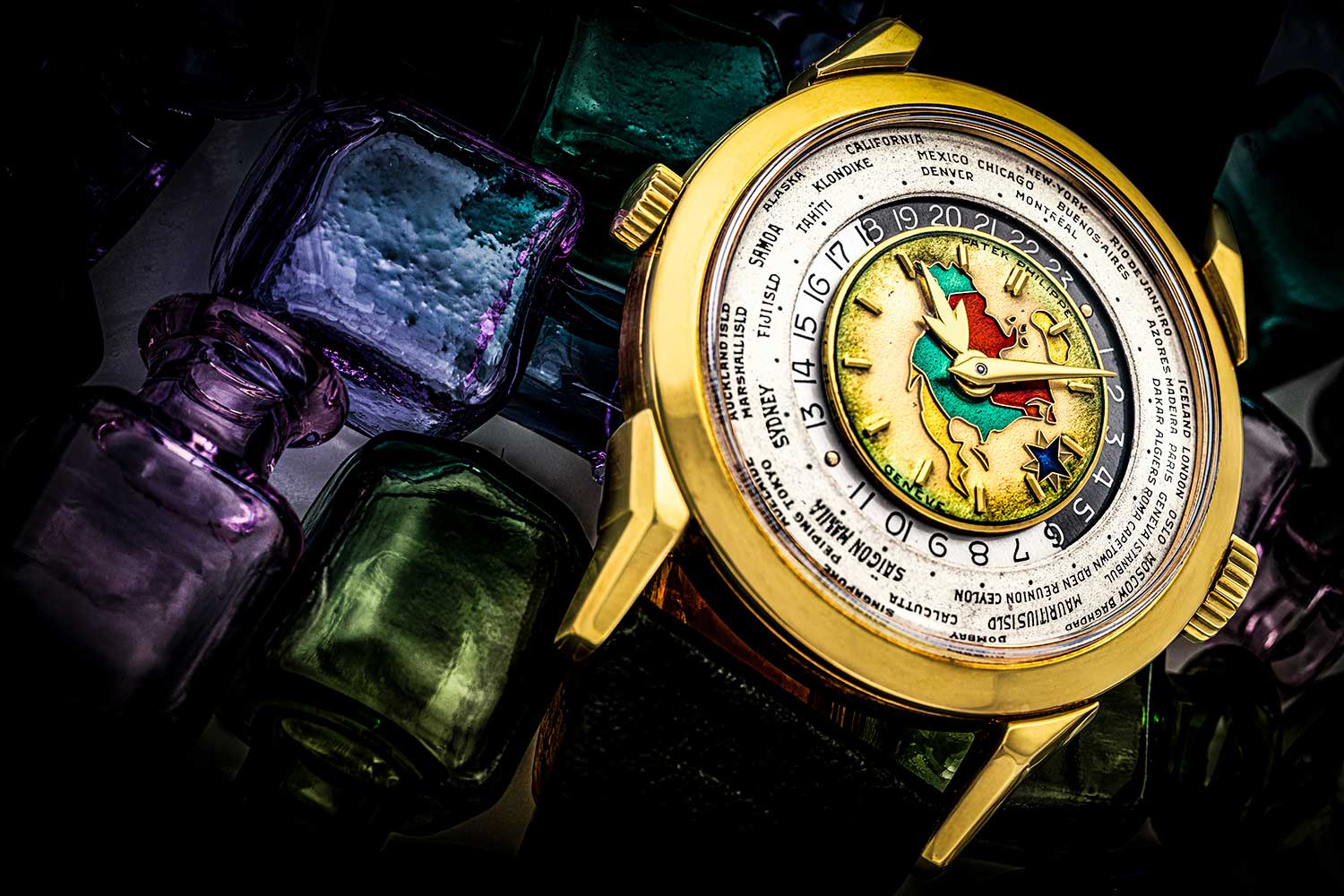
The Patek Philippe World Time ref. 2523 'North America'
Indeed, the Patek Philippe World Time ref. 2523, with its instantly recognisable cloisonné enamel world map, is a landmark creation by the Genevan watchmaker. Interestingly, the value of the ref. 2523 with an enamel dial had already crossed the million-dollar mark at auction, even back in the 1990s. A ref. 2523 with a “Eurasia” map, one of only three known, was sold at Antiquorum for
CHF 1.64 million in 1999. To put things into perspective, a steel ref. 1518 – of which only four exist – sold for around CHF 1.43 million in 2000. Suffice it to say, the importance of this watch is undeniable. Let’s take a closer look at its history to understand why.
The Origin of the World Time ref. 2523
With budget airlines making travel easily accessible and smartphones providing convenient timezone tracking, worldtime wristwatches may seem like relics of the past. However, these timepieces were actually invented less than a century ago. In fact, the current world time system that covers 24 time zones was implemented just over a century ago, which is a relatively recent introduction compared to thousands of years of human culture. As a result, the World Time is a unique creation that reflects the needs of a transitional period in human history. This makes it historically fascinating not only for watch aficionados, but also for a broader understanding of humanity’s past.
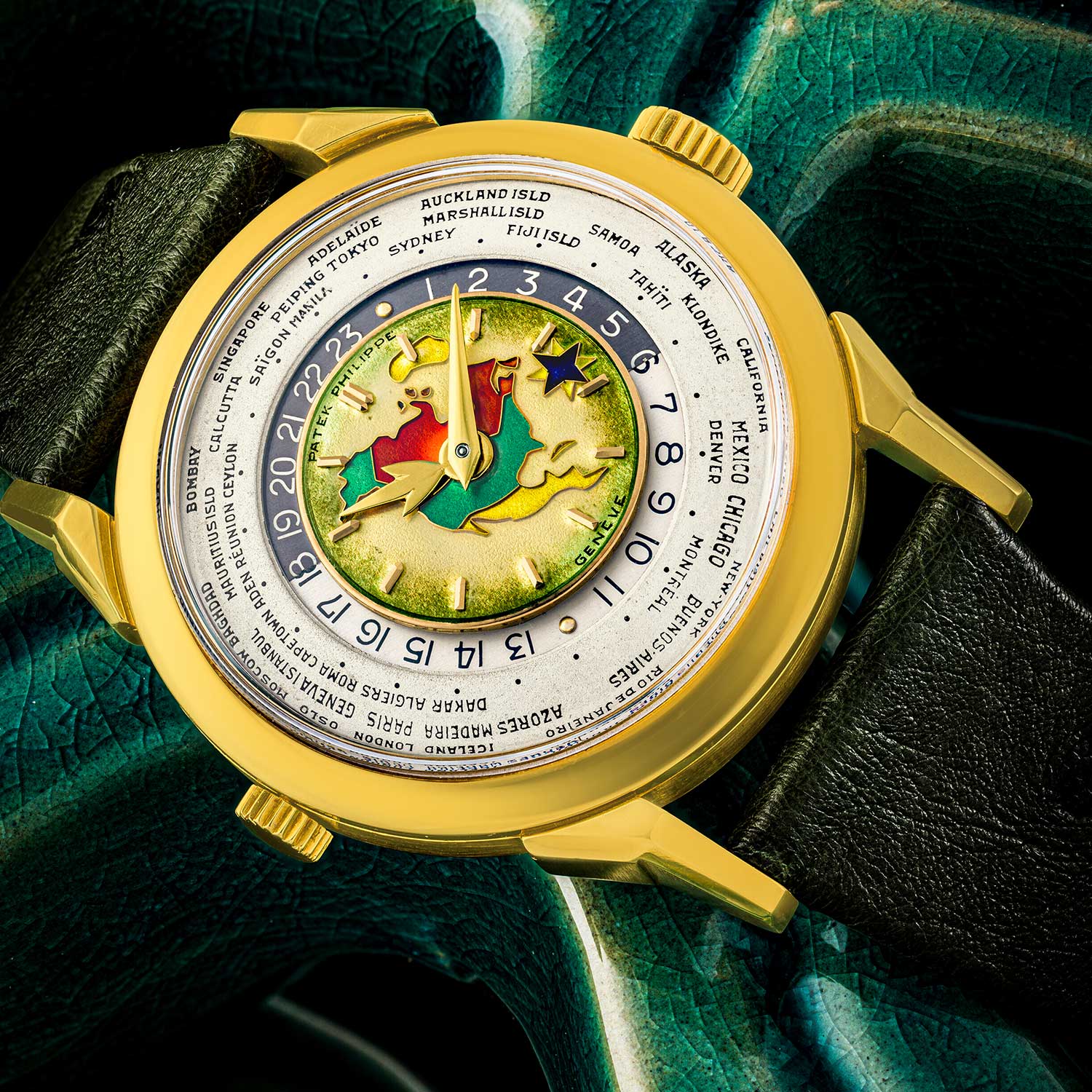
The Patek Philippe World Time ref. 2523 'North America'
In response to the increasing demand from travellers to track multiple time zones, Louis Cottier patented the world time mechanism in 1931.This mechanism consisted of a standard 12-hour time telling dial, along with an additional 24-hour ring and city ring to conveniently display the current time in major cities across all continents. This idea was built upon by Louis’ father, Emmanuel, who proposed heures universelles (French for “universal time”) display as early as 1885, just two years after America adopted Sandford Fleming’s 24-time zone standard time.
Mr Cottier’s invention caught the attention of the Stern family who had recently taken over Patek Philippe in 1932. This led to a fruitful collaboration between the two that resulted in the creation of some of the most important wristwatches of the 20th century. In 1937, Patek Philippe began producing world time watches, both pocket and wristwatches. Among them were the venerable pocket watch ref. 605 HU, and several intriguing worldtime Calatrava models, including the elegant ref. 96 HU, the rectangular ref. 515 HU, and the handsome ref. 542 HU.
Following these, Patek Philippe released their first serially produced wristwatch in 1939, which took the form of the ref. 1415 with an ultra-wide bezel engraved with the city ring, like its predecessor the ref. 542 HU. The most refined version of the World Time with the ref. 2523 was unveiled in 1953, boasting a twin-crown set up and an elegant city ring included in the dial.
Regrettably, the ref. 2523 and its variant, the ref. 2523-1, marked the end of the World Time series. These watches were eventually replaced by a new generation of timepieces exemplified by the Travel Time ref. 2598, which features a jumping hour hand for the quick adjustment to a second time zone, also invented by Louis Cottier. The advent of commercial jet flight in 1952 changed the needs of travellers as they were now more concerned with the time at home and the destination, rather than multiple time zones required for slower travel via land and sea.
The World Time series was a short-lived collection that spanned multiple references in just under two decades, with production numbers for each watch very low. For example, the ref. 1415 was only produced in approximately 115 copies, while the ref. 2523 had a production range of only two to three dozen (with the lower estimate based on known pieces and the higher estimate based on serial number range). This is in contrast to the hundreds of units produced for the perpetual-calendar chronograph ref. 1518 and ref. 2499.
The Ultimate Patek Philippe World Time
If you have read our founder’s story on
the complete history of Patek Philippe World Time, you may recall that there are some fascinating references, such as the unique ref. 1415-1 that featured a pulsometer chronograph. But which reference best captures the essence of the World Time series in terms of remarkable mechanics, historical significance, and exquisite aesthetics?
Collectors often consider the models with a cloisonné enamel world map dial, which is created by outlining the continents with thin gold wires and then filling the compartments with enamel, as the most stunning Patek Philippe World Time pieces. This includes the pocket watch ref. 605 and the wristwatches ref. 1415 and ref. 2523. While enamelling is often associated with pocket watches, the World Time wristwatches stand out as the only complicated models with a cloisonné enamel dial in the brand’s history.
Unpacking the Details of the Patek Philippe World time Ref. 2523
The ref. 2523, as the swan song of the World Time series, is the rarer of the serially produced references, but it also boasts several interesting details revered by collectors. These include the strikingly handsome yet gently elegant lugs that are multifaceted, as well as the symmetrical dualt-crown set up at three and nine o’clock. Another feature that sets it apart is its wearability as a wristwatch, regardless of the era. At 35.5 mm wide, it is larger than the 31 mm case of the ref. 1415, and available in yellow, pink, or white gold.
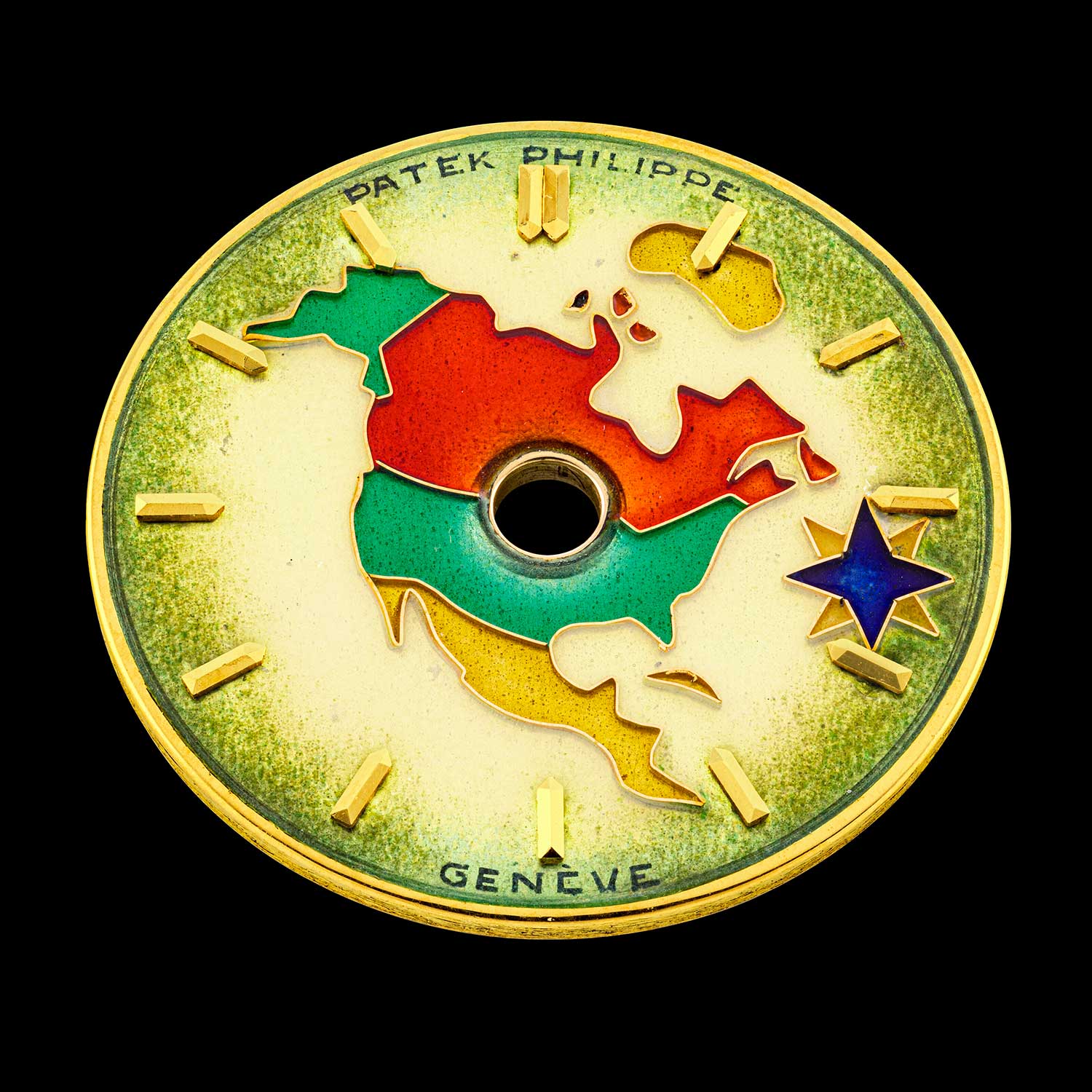
The cloisonnê enamel dial
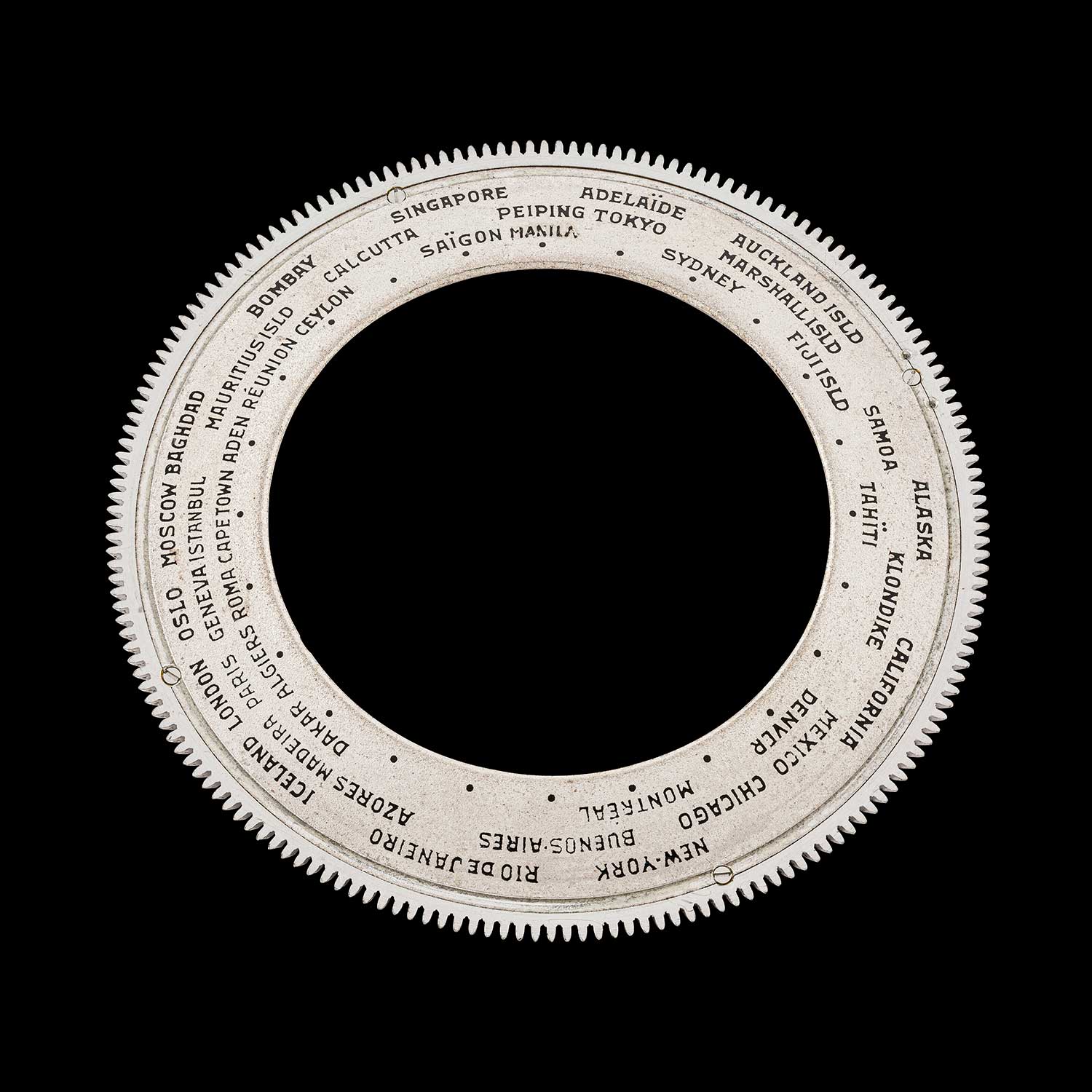
The city ring
The dial of the ref. 2523 is also a highlight, available in guilloché, monotonous enamel, or colourful cloisonné enamel depicting a part of the world. Of the enamelled versions, there are five with a translucent blue dial and 12 with a cloisonné enamel dial, with six displaying the North America map, three with the South America map, and three with the “Eurasia” map.
While debating the rarity of the various cloisonné enamel dial versions of ref. 2523 is tempting, it’s largely irrelevant given the limited public sales. In the past decade, only three enamelled ref. 2523 watches have surfaced at major auctions: a
blue enamel dial at Christie’s in 2014, a
double-signed blue enamel dial at Christie’s in 2019, and a “Eurasia” map version at Phillips in 2021. These sales have generated astronomical results, with the double-signed blue enamel dial fetching nearly USD 9 million and the
“Eurasia” map version selling for roughly USD 7.9 million.
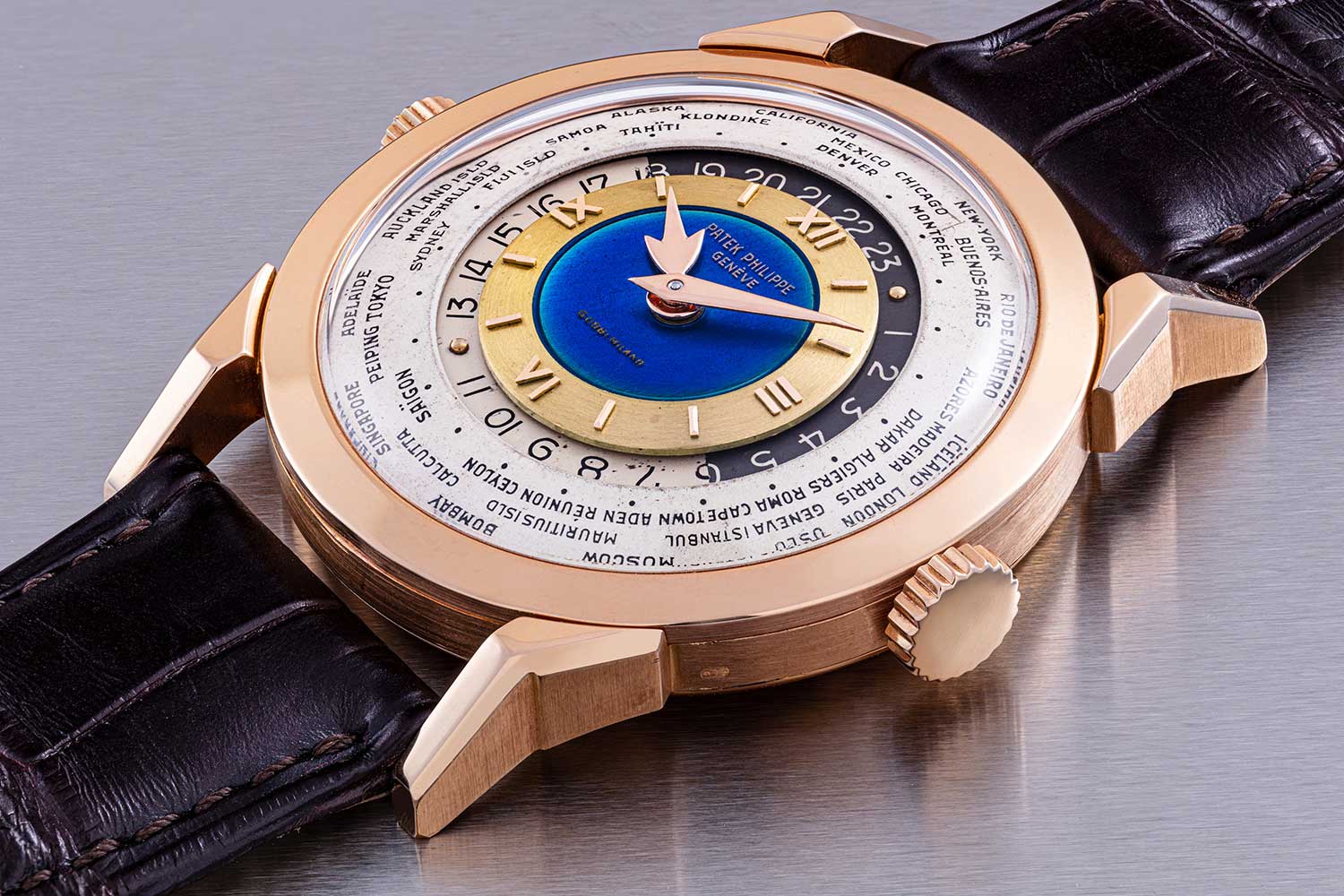
Aa double-signed blue enamel dial ref. 2523 that sold at Christie’s in 2019 for nearly USD 9 million
Fortunately for collectors who have longed for a cloisonné enamel ref. 2523, one will be available at the upcoming
Christie’s Important Watches auction on
May 26 and
28, both physically in Hong Kong and online. This particular model features a yellow gold case and a North America map, making it one of only three of its kind. It is naturally the ultimate watch of the sale and will be auctioned as the
last lot on the second day.
Christie’s states that the dial of the ref. 2523 was produced by Stern Frères in 1952 and is believed to have been crafted by Marguerite Koch, a renowned enameller of the time. The cloisonné enamel map features vibrant colours ranging from red to gold to turquoise, highlighting the various countries and oceans, and remains crisp even after all these years.
Notably, the model up for auction was previously
sold by the same auctioneer in 2012, evidenced by the same movement number of 722’706 and case number 306’205. Additionally, the movement number of 722’7xx indicates it is from the second and final batch of the watch, with a delivery date of 1955.
This exceptional Patek Philippe will be auctioned as part of Christie’s Important Watches auction held in Hong Kong on May 26 and 28. View the full catalog for part one
here, and part two
here.









